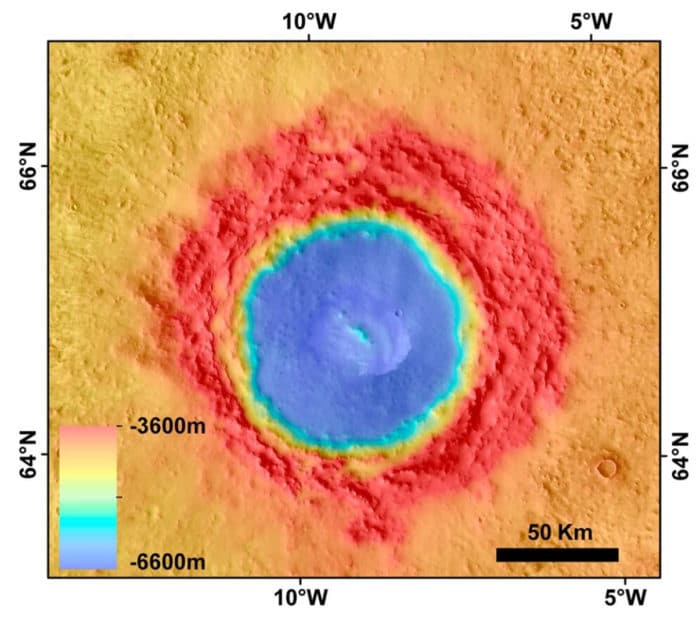A new study by the team of scientists from France, Australia, and Spain suggests that Lomonosov crater impact event on Mars might have triggered mega-tsunami on the Red Planet billions of years ago.
Three years ago, scientists found evidence that suggested Mars had experienced a giant tsunami event billions of years ago. The proof comprised of geological formations that resembled some on Earth that had been formed by a tsunami. That drove the scientists with this new exertion to attempt to follow back the conceivable source of such a tsunami.
Considering that it was due to a celestial body of some sort impacting the planet, scientists started searching for craters in the area that might fit with their prior observations. After analyzing several candidates, the scientists settled on Lomonosov as it appeared to be both from the same time period as the possible tsunami and the right size.
A careful observation of the crater later suggested that part of its rim was missing, possibly showing that it was worn down by backwash as displaced water returned. Scientists also noted that the crater appeared to be approximately the same theoretical depth as the ancient Mars ocean.
However, the topic is still very much under debate by Mars scientists. Most agree that an ocean existed over 3 billion years ago, but there are a variety of opinions about how long it lasted.
Through this study, scientists suggest it lasted long enough for an ocean to exist as late as the time of the impact that formed the Lomonosov crater, resulting in the proposed tsunami.
